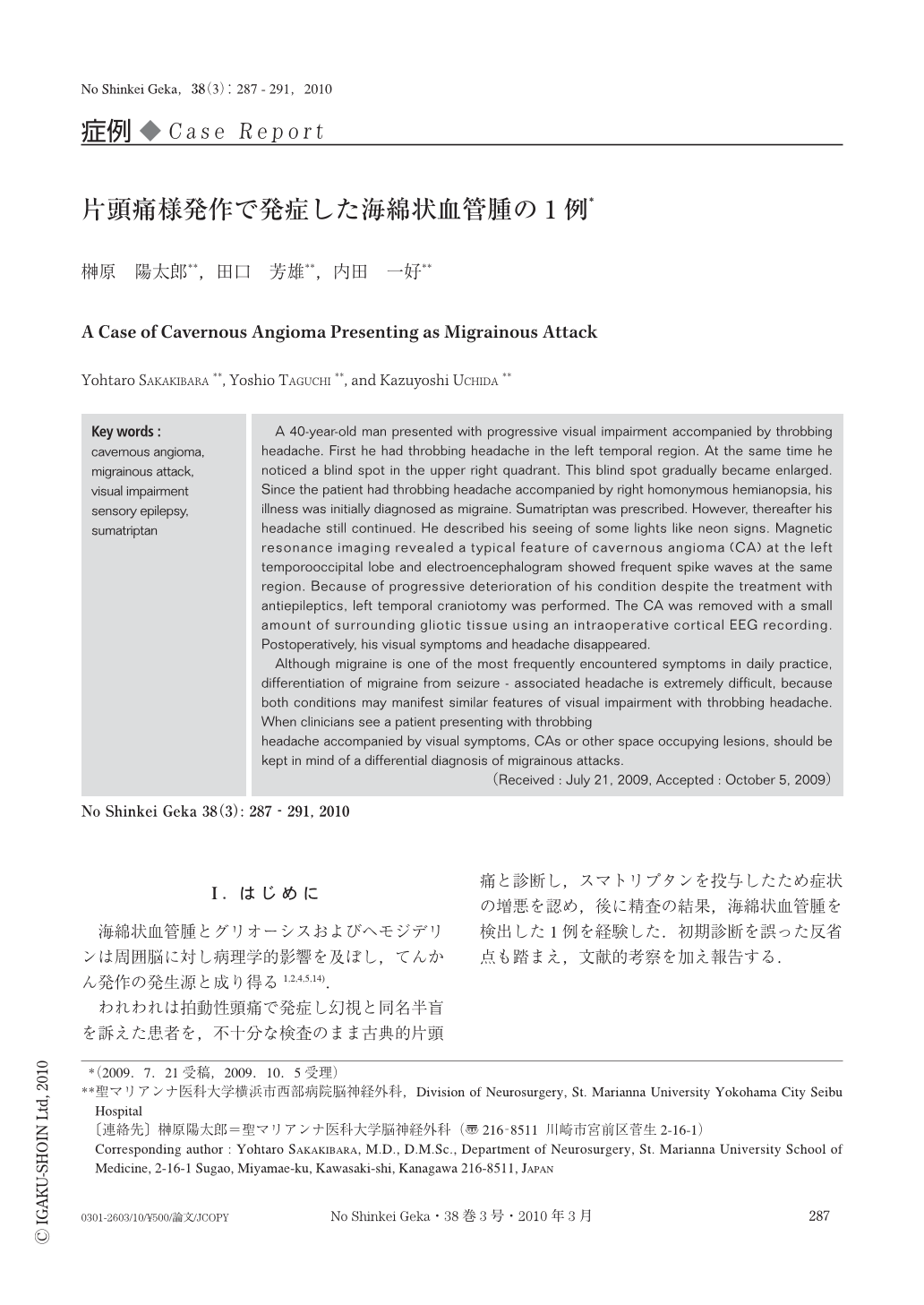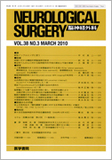Japanese
English
- 有料閲覧
- Abstract 文献概要
- 1ページ目 Look Inside
- 参考文献 Reference
Ⅰ.はじめに
海綿状血管腫とグリオーシスおよびヘモジデリンは周囲脳に対し病理学的影響を及ぼし,てんかん発作の発生源と成り得る1,2,4,5,14).
われわれは拍動性頭痛で発症し幻視と同名半盲を訴えた患者を,不十分な検査のまま古典的片頭痛と診断し,スマトリプタンを投与したため症状の増悪を認め,後に精査の結果,海綿状血管腫を検出した1例を経験した.初期診断を誤った反省点も踏まえ,文献的考察を加え報告する.
A 40-year-old man presented with progressive visual impairment accompanied by throbbing headache. First he had throbbing headache in the left temporal region. At the same time he noticed a blind spot in the upper right quadrant. This blind spot gradually became enlarged. Since the patient had throbbing headache accompanied by right homonymous hemianopsia, his illness was initially diagnosed as migraine. Sumatriptan was prescribed. However, thereafter his headache still continued. He described his seeing of some lights like neon signs. Magnetic resonance imaging revealed a typical feature of cavernous angioma (CA) at the left temporooccipital lobe and electroencephalogram showed frequent spike waves at the same region. Because of progressive deterioration of his condition despite the treatment with antiepileptics, left temporal craniotomy was performed. The CA was removed with a small amount of surrounding gliotic tissue using an intraoperative cortical EEG recording. Postoperatively, his visual symptoms and headache disappeared.
Although migraine is one of the most frequently encountered symptoms in daily practice, differentiation of migraine from seizure - associated headache is extremely difficult, because both conditions may manifest similar features of visual impairment with throbbing headache. When clinicians see a patient presenting with throbbing
headache accompanied by visual symptoms, CAs or other space occupying lesions, should be kept in mind of a differential diagnosis of migrainous attacks.

Copyright © 2010, Igaku-Shoin Ltd. All rights reserved.


